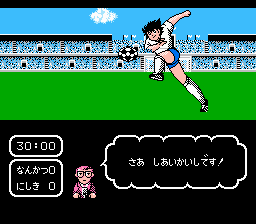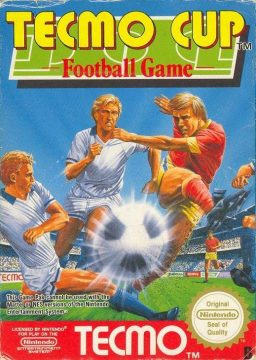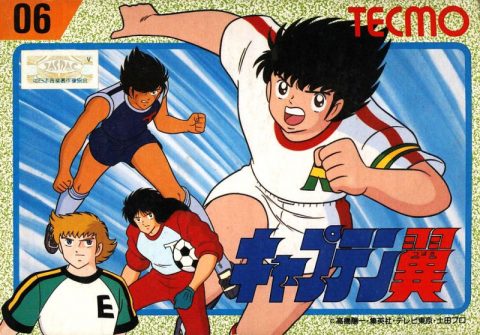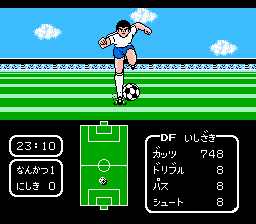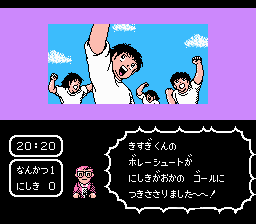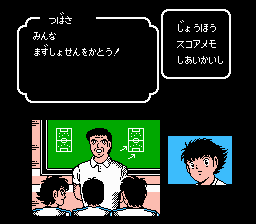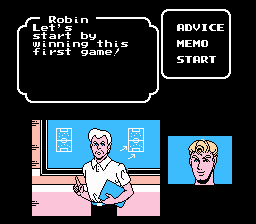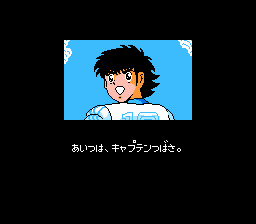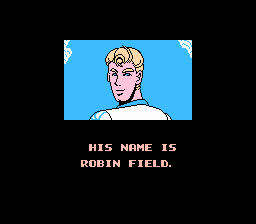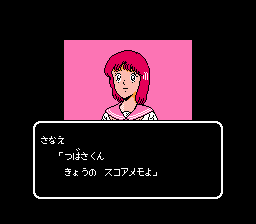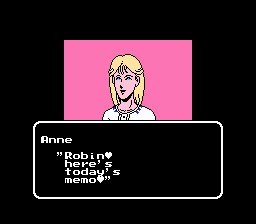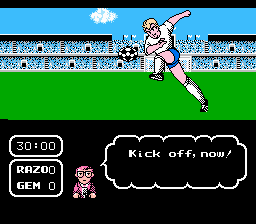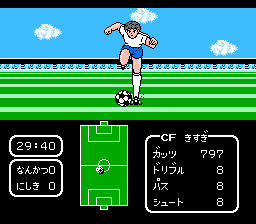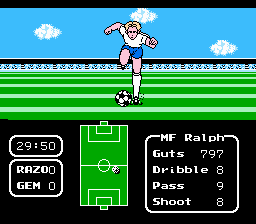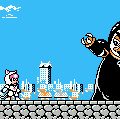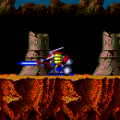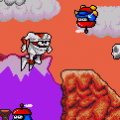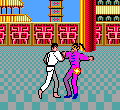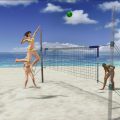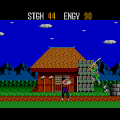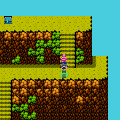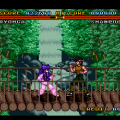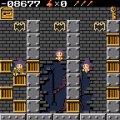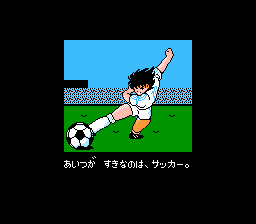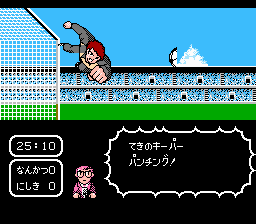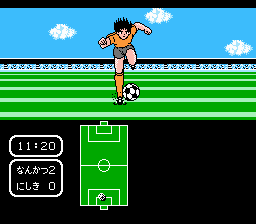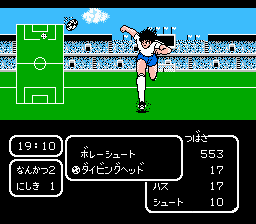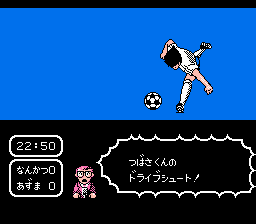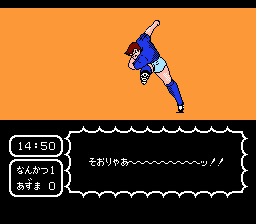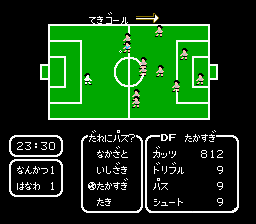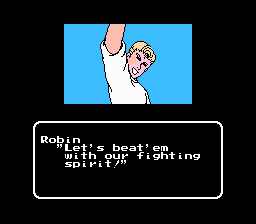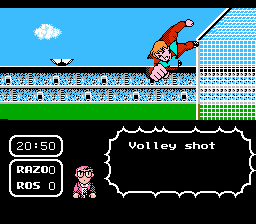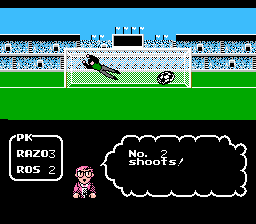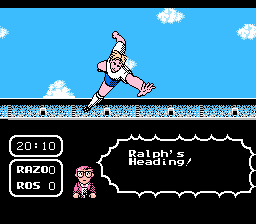- Captain Tsubasa
- Captain Tsubasa II
Captain Tsubasa is one of the most famous Japanese manga and anime series worldwide, and as such, has spawned numerous video games. The original manga follows the adventures of Tsubasa Oozora, a young Japanese teenager with a gift for soccer. Under the mentorship of Roberto Hongo, a Brazilian soccer legend and a friend of his father, Tsubasa and his Nankatsu soccer team will face many opposing teams, such as arch-rivals Toho and their captain Hyuga Kojiro, and win championships. At the end of the first series, Tsubasa wins the U-17 soccer World Cup for Japan, then leaves to play in Brazil.
The manga was published in Weekly Shonen Jump between 1981 and 1987, and is one of the best-selling series ever. The adaptation in anime form, which ran in Japan between 1983 and 1986, is arguably what made the series famous around the world. It was broadcasted at the end of the 80s / beginning of the 90s in most countries, and was a huge success in Europe (where the rights were bought by Silvio Berlusconi’s Fininvest media company, then broadcast in Italy, France, Spain, but also Germany and Poland), as well as South America, the Arabic world (including Middle Eastern countries and Iran, where it was very popular) and Turkey. It was, however, never broadcasted in North America, who seemingly has never been interested in soccer. But in my home country of France, ask literally anyone born in the 80s about it, and they’ll fondly remember the over-the-top style (that famously inspired the movie Shaolin Soccer), with its special shots deforming the soccer ball which then takes improbable trajectories, the values of sportsmanship and teamwork at the heart of Tsubasa’s team, and the length of the narration, where one match stretches over half a dozen episodes.
Captain Tsubasa is a Famicom game released in 1988 in Japan, and created by Tecmo. Tecmo, at the time, was mainly a developer of arcade games, but was starting to make games for the Famicom; the studio went on to make great Famicom/NES games such as Ninja Gaiden and quite a bit of Tecmo-branded sports games, culminating in the excellent Tecmo Bowl. Captain Tsubasa was, in a way, a Japan exclusive: it was reworked, with new sprites and without the Tsubasa license, and translated to be released as Tecmo Cup Soccer Game (Tecmo Cup Football Game in Europe) in 1992.
The gameplay employs a system dubbed “Cinematic Soccer” by Tecmo, which was then used in the following three Tsubasa-licensed games they made. Contrary to most soccer games, this isn’t an simulation-style gameplay, but one that is controlled through menus: the action pauses when you hit a button or when you encounter a player of the opposing team, giving you time to plan your next move in a menu. While attacking, you can either pass the ball, shoot towards the goal, or dribble (which either means going back to moving your player, or attempting to evade capture if you’re in front of an opposing player challenging you for the ball). The menu also appears when an opponent has the ball and one of your players is challenging him, in which case you can choose to mark him, tackle him, or attempt to cut the pass; however, the CPU also selects an action, which might make yours fail (for instance a pass cut when no pass was being done). Once you have selected your action, it plays out in a style that is meant to emulate the anime, with dramatic shots of your player and the opponents, the ball soaring in the sky, the goalkeeper stretching to catch it, etc.
This system is rather good at emulating the anime’s distinctive style, and giving a fan their money’s worth. It plays rather differently than most soccer games, but that is fine with me; in fact, I like the idea of pausing to strategize (when to pass, how to avoid opponents, etc.), as opposed to most soccer games, where everything is real-time and requires pressing several buttons with the right timing. However, this system’s implementation in this game is flawed, and doesn’t give you the control one could expect. The most glaring problem, for me, is that the mini-map showing your player’s position does not show the position of your opponents. The only way to reveal their position is to attempt a pass, upon which all 11 opposing players are shown on a map — however, your teammates are not shown. Instead, the menu gives you four choices of players in your team, and each option highlights the position of the player. They might be anywhere on the field; in my experience, they are often all behind you, and sometimes way back, which doesn’t help in getting closer to the opponents’ goal. This makes strategizing a frustrating affair, despite the fact it seems only logical to want to avoid opposing players and pass the ball to teammates with a good position. Here, you would have to enter the menu every few seconds to see where your opponents are, and if you want to avoid an encounter or find yourself surrounded, attempt a pass, with the very real chance that none of your teammates are close to you.
It seems like the game assumes you will just run towards the goal until you find an opponent, then decide to consider your options; but this, of course, increases the chance of losing the ball, and doesn’t feel like the smartest thing to do in a soccer context. Some reviewers see in this system a variation on the “random encounter” RPG trope, as the game has RPG elements, but this is frustrating in the context of a soccer game. It is even more obvious when your opponents have the ball: you cannot control (or see) any of your players, nor can you attempt any sort of defense. You just have to wait until the opponent stumbles upon one of your players, then select an action to try to stop him. This makes defending a frustrating, passive, and random affair, which is not very fun.
Coupled to this menu-based system are player statistics, which determine the outcome of the actions – a system which, coupled to the game pausing when choosing an action, evokes an RPG game. One of the most important statistic is the energy level, or “guts”, which decreases as you dribble or shoot (but partly regenerate after half-time); this is a very good idea to prevent the player from over-relying on Tsubasa, the best player in the team by far. Each player also has a number attached to each action (shooting, passing, dribbling and evading defense, and then tackling, cutting the pass, or marking the player), and you only see the statistic for your player. The system presumably uses these to determine the outcome of the actions, but it is not clear how: you don’t know the opposing player’s numbers, or whether there’s any randomness or modifiers involved, so you often just end up picking the action for which your player has the highest score. As you win matches, the statistics of your players go up; however, you do not control which players level up. Hence, while there are statistics and leveling up, the RPG side of things is rather minor, as it ends up giving you very little choice or control.
The story of the game is structured over two tournaments that Tsubasa takes part in. First is the National tournament, with his Nankatsu team, culminating in a final against arch-rivals Toho; the second tournament is the Junior World Cup, which allows you to control a team made with Tsubasa and all the strong players you encountered in the Nationals, against various other national teams of strong players. In between some of the matches, but not all, are bits of story, including a sidequest involving Misaki Taro that the player has to complete in order to have him on the team. The story doesn’t actually follow the story of the manga, as the events are not the same; however, they do emulate the spirit and the story beats found in the manga, and all major characters are here, faithfully depicted. The difficulty increases as you progress in a tournament, with the World Cup being harder than the Nationals; all in all, it takes over 10 hours to reach the end of the game.
As for the graphics, the Tecmo Theater format allows the game to be faithful to its source material, as the top half of the screen only represents at any given point a background, a moving player sprite, and the ball. The character sprites are rather well-made and each character is easily recognizable, although some sprites look a bit strange. There was a real effort to emulate the style of the anime, too: the player runs on a field that unnaturally shows the Earth’s curvature, the facial expressions of important players are sometimes displayed during a particularly strong action, the balls breaks the net when the shot is too strong, etc. However, there are minor graphical glitches that appear during actions, most notably on the ball when it moves or is caught by a player; nothing major, but it does detract a bit when the graphics have so few moving parts. Some animations are also a bit too simple; a head shot is literally just the player sprite being moved around, and a straight shot is a simple 2-frame animation. Finally, the pace of these animations could also have been tightened; the animation to receive the ball after a pass, for instance, lingers for half a second too long before putting you back onto the field.
The music was composed by Keiji Yamagishi, who worked on several of Tecmo’s NES soundtracks (including Ninja Gaiden and Tecmo Bowl). It is rather well-used in the game – a tune plays when you have the ball, another one when the opposing team has it, and a more urgent one plays on the last five minutes of a period – and incorporates “Moete Hero”, the anime’s theme song. The dozen of tracks are very, very good, owing to Yamagishi’s talent; they accompany the action very well, succeed in creating tension, and do not really get old. My one complaint would be that the arrangements are a bit sparse.
The game was translated into English (and Spanish) and scrubbed from all its Tsubasa content (including “Moete Hero”) for its 1992 release as Tecmo Cup Soccer Game. The gameplay is exactly the same, except the story focuses on Robin Field, a blonde teenager that doesn’t have Tsubasa’s charisma. Apart from the changes in the sprites and a few more graphical elements, the goalkeepers are much harder to beat, and Misaki’s sidequest has been deleted. The rest is the same, for better and for worse; you’ll find a few commentators surprised by the fact that you cannot see your opponents on the field.
All in all, Captain Tsubasa’s shining moments lies in its presentation, offering a nice recreation of the anime’s style and flamboyance; but its gameplay, while a novel concept, doesn’t fully realize its potential yet, and the game can be rather frustrating.
